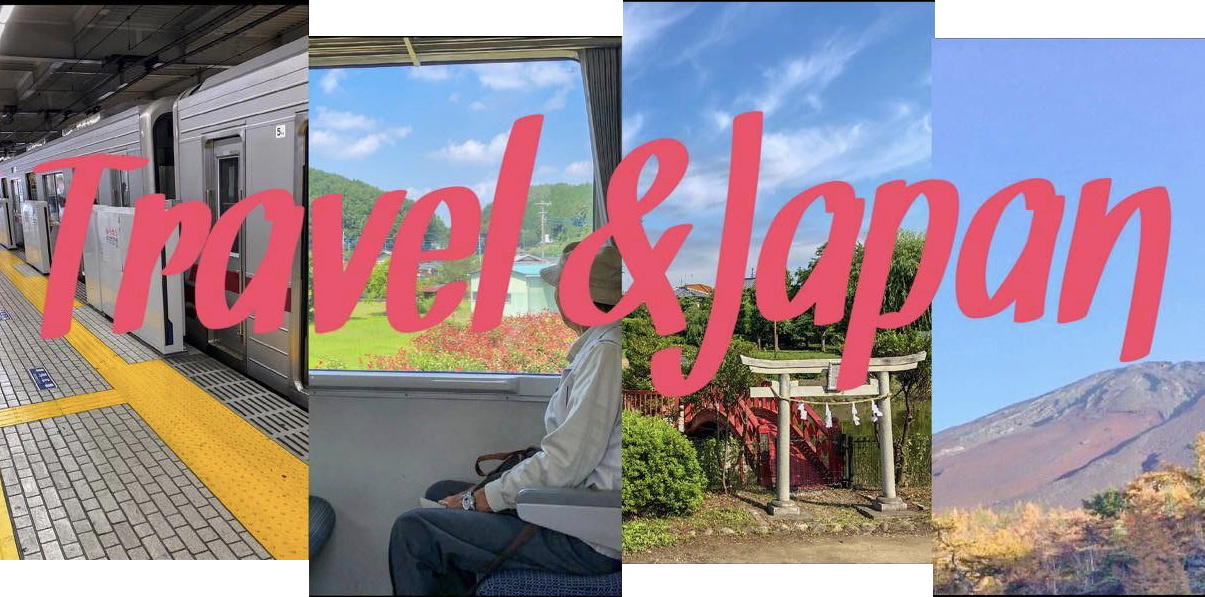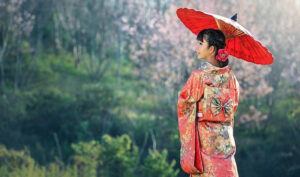
Planning for a trip to Japan takes time and effort. I know that sounds like work, but would you rather enjoy your vacation or be lost at the train station. My first visit to Japan was chaotic. Like many people, I drove a car everywhere in my home country and was not familiar with navigating mass transit. I was lost and missed several of my sightseeing appointments. The trip was filled with frustration, and my journey of a lifetime was ruined.
My second visit to Japan was well planned and the total opposite of the first one. Each day was delightful and frustration-free. I was able to fulfill my dream of seeing Japan the way I envisioned it. I had such a good time that I decided to move here.
Here’s how to plan your trip to Japan.
1. What is the best season to visit Japan?
2. VIsa information
3. Culture
4. Navigating mass transit
5. Plan your trip
6. Travel insurance
7. Cash
8. Packing for Japan
9. Flight to Japan
10. Wi-Fi or sim card
11. Mass Transit
12. Hotel or Airbnb
13. Places you can visit only in Japan
14. Take your time
What is the best season to visit Japan?
First, you need to decide when you want to visit Japan. What’s the best season? It’s entirely up to you and your preferences. Do you want to see a sumo match or a cherry blossom festival? How about climbing Mount Fuji? The season determines the way you will perceive Japan.
Spring
Spring for most of Japan is cool with nice breezes and light rain. The humidity begins to rise, and the Japanese people begin warmer outdoor activities. Flowers bloom throughout the country, including the cherry blossoms. June begins the transition to summer with heavy rain and high humidity. Two major spring events in Japan are the Cherry Blossom Festival and Golden Week.
The Cherry Blossom Festival happens throughout Japan at different times during the springtime. It usually begins in late March and ends by late April. The blossoms last about two weeks in each area and are a breathtaking sight. This is my 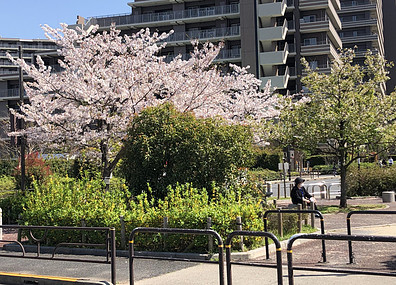 favorite time of the year in Japan. The Japanese take time off from work and sit with their family under the cherry trees on a blanket and enjoy fresh sandwiches and sake.
favorite time of the year in Japan. The Japanese take time off from work and sit with their family under the cherry trees on a blanket and enjoy fresh sandwiches and sake.
Golden Week is celebration time in Japan and a busy one. Starting May 29th and ending April 5th, most workers receive time off, and there are people everywhere celebrating. Plane ticket prices go up, and the trains are packed. Everyone wants to have fun. If you’re not into crowds, then this is not for you. If you want to visit Japan at this time, book well in advance. Japanese and the foreigners who live here love to travel because they usually don’t have this much time off again until Obon.
Summer
Summer in Japan starts at the end of June and ends in late September. I have visited 33 countries worldwide, but none was as hot and humid as central and southern Japan. The type of heat that takes your breath away and causes several deaths in Japan each year. Summer in Japan is serious, but luckily you are never far from a vending machine full of cold drinks. Drink plenty of liquids because heatstroke is usually the alternative.
Typhoon season also starts in the summer, and several typhoons hit Japan each year. Heavy rainfall is also normal. You’ll find the Japanese hiding under their umbrellas. So why visit in summer, you’re probably asking me. Mount Fuji is my answer.
Read about natural disasters in Japan here.
Mount Fuji is the highlight of most visits to Japan. I have visited twice and plan to climb in the future. Each time I signed up for a bus tour and had a fantastic time. I was able to see the summit both times. The bus will take you about halfway up the
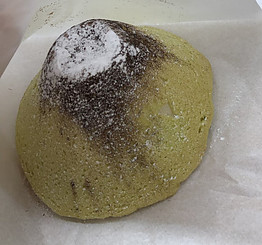 mountain where you can have coffee and freshly baked melon bread in the mountain’s shape. There are also shopping areas and a post office where you can mail friends and family a postcard with the Mount Fuji mail stamp.
mountain where you can have coffee and freshly baked melon bread in the mountain’s shape. There are also shopping areas and a post office where you can mail friends and family a postcard with the Mount Fuji mail stamp.When you visit Mount Fuji, you will need to take a coat, even in summer. There is almost always fog and a strong cold wind blowing. The last time I went, a Typhoon was off the coast, and the wind was extra strong and cold. My jacket was not enough to keep me warm.
Read about Mount Fuji here.
Climbing Mount Fuji is completely different from a visit. You’ll need equipment and a lot of stamina. Several people don’t make it to the top while others easily climb the mountain. I’ve seen stories of people in shape unable to reach the top, but people out of shape easily complete it. I believe this has to do with equipment selection, overconfidence, and dehydration. People say once you arrive at the summit, you feel like you have accomplished something you will remember forever.
Summer festivals are a blast! I highly recommend going to one or two. You should check out a firework festival and a Bon dance festival. There is so much to see and do at these events, and the food is amazing. There are plenty of games like goldfish catching and ring toss. The colors are bright, and everyone is in a good mood. When the Bon dance starts, don’t forget to join in. You’ll be glad you did.
Read about the Obon Festival here.
Autumn
Autumn is a welcome time of the year after a long hot summer in Japan. Autumn is from September to November, and many believe this is the best season to visit. The temperatures begin to cool, and the leaves of the trees show beautiful colors. This is also the best time to find out what Sumo is all about because another Sumo grand tournament is held.
The brilliant Autumn colors can be found everywhere across Japan, so visit a local park, temple, garden, or get on a train.
I’m always on the move this time of the year, searching for a place to sit with a view. The Japanese are always out walking to view the bright colors and feel the chill in the air.
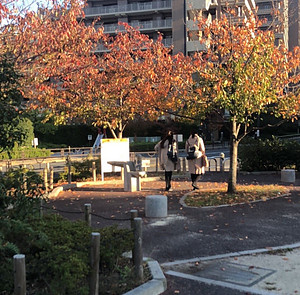
The last Sumo grand tournament is held in November, and some people say it’s the most spectacular. All Sumo want to end the year with the best rank they can obtain.
Winter
Winter brings cold temperatures to Japan and lasts from December to February. Snow usually only accumulates in northern Japan and at higher elevations. If you enjoy snow and snow activities, then winter is the season for you. When I lived in Yamagata prefecture, I built a snow fort and watched snow removal in my parking lot by turning on the water piped across the lot, and trickling water would melt the snow. No back-breaking snow removal for the Japanese.
Two things people visit Japan in the winter are illumination and snow festivals.
Light shows happen across Japan in winter and are called illumination. I usually visit Tokyo illumination and spend hours walking and viewing the lights and displays. It’s incredibly refreshing and breathtakingly beautiful.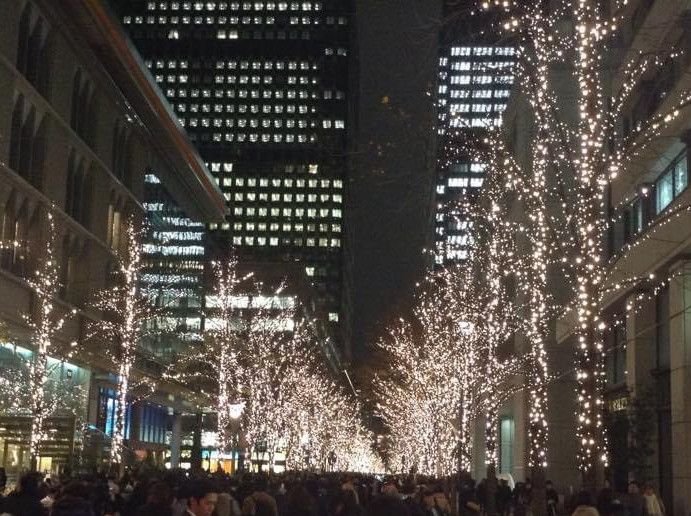
In the northern part of Japan, it snows a lot. Some roadways are cut through snow that you can see on either side as you drive. So naturally, there are several snow festivals. The most enjoyable part of these festivals is the ice and snow sculptures. I’m not talking about small sculptures but grand and glorious works of art that have to be seen to be believed.
Visa information
Now that you know what time of the year you plan on visiting Japan and are excited about the trip ahead, it’s time to find out if you need a visa to enter the land of the rising sun.
Because of the Coronavirus and ever-changing visa requirements, this site cannot answer questions concerning a visa. For the latest visa information, please contact the Consular Section of the Embassy or Consulate General of Japan.
Culture
Japan’s culture is very different from the rest of the world. From being quiet on mass transit to take your shoes off inside.
Read about Japanese culture here.
Navigating mass transit
If you ask most foreigners who live in Japan how they navigate mass transit, the answer would be Google maps. Not only can it get you safely to your destination, but the satellite option can also help you find the exact building you’re looking for. You can plan your entire trip and add it to your calendar.
Construction areas are up-to-date on Google maps, so you’ll know in advance to avoid any areas under construction.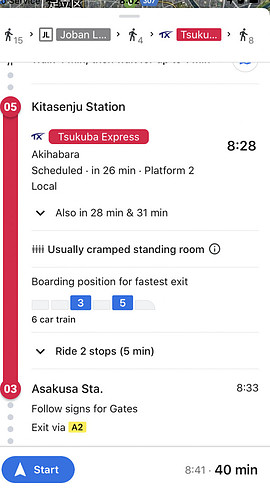
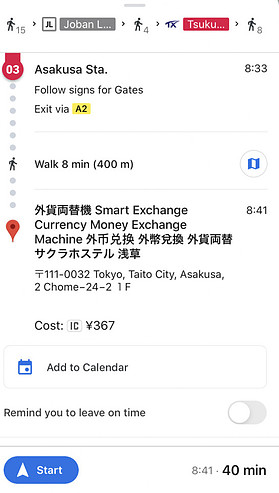
Plan your trip
Now that you have picked the seasons, found out about your visa requirements, understand the cultural differences, and Google maps to help you navigate mass transit, it’s time to plan your trip.
Each of the following sections will help you plan a frustration-free trip to Japan.
Travel Insurance
Travel Insurance? Makes perfect sense to me after I had to see the doctor during my first visit to Japan. My allergies took control of my vacation, and after turning into an infection, I was visiting the nearest doctor. After a short doctor visit and five medications, I found that my wallet was somewhat lighter than the day before.
I always have travel insurance when I travel now. It cost much less than a simple allergy turned infection doctor bill. A comprehensive policy covers several different events that can happen.
Oh, did I mention that if you leave unpaid medical bills in Japan, they won’t allow you to enter the country until you pay the bills? Of course, you won’t remember until you arrive in Japan, and immigration denies you entry.
Read my full review of travelinsurance.com here.
Cash
Japan is a cash society, and several places only take cash for purchases. This is changing but at a prolonged rate. You can use cards at places like convenience stores, shopping centers, and tourist areas. However, many places require cash like locally-owned shops, shrines, temples, and any area outside of major cities.
You’ll want plenty of Yen to traverse all areas in Japan. So here’s how to get some.
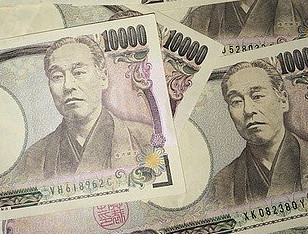
Your bank can turn your currency into yen, but it takes time. I ordered ¥50,000 at my bank in America, and it took about three weeks before I could pick it up. They also charged me a fee, but this was minor compared to money exchanges and ATMs in Japan.
After arriving in Japan, you can exchange money at the money exchange within the airport. There is a fee for this, but it’s not that much. The exchange will happen within minutes instead of weeks like at your home country bank.
Using the ATM at the airport or several different locations all across Japan is the most expensive way to receive yen. When I take money out of an ATM in Japan from my American bank account, I receive three charges. A handling fee for the use of the ATM and two transfer charges that show up in my account. The amount depends on the amount of money transferred.
Packing for Japan
You’ll need a few items to make your stay in Japan more comfortable and worry-free. These items can be found in Japan, but who wants to spend their vacation shopping for needed items when you could be climbing Mount Fuji.
- Power Bank – Don’t miss a memory because your battery is dead.
- Power converter – Needed to use electrical outlets in Japan.
- Seasonal clothing – Remember to bring a coat for Mount Fuji even in summer.
- Correct Footwear – Make sure your regular shoes are easy to remove.
- Medication – Bring your meds but know the restrictions. Check with your embassy.
- Hand Towel – Some restrooms don’t have a way to dry your hands.
- Small luggage – Mass transit is not equipped for large suitcases. Several train stations outside major cities don’t have an elevator but do have long flights of stairs. Read all about luggage in Japan here.
- Room for Souvenirs – Take home your treasures.
Flight to Japan
The flight to Japan can last for a couple of hours to a couple of days, depending upon your home country and the ticket you purchase. My first flight to Japan took 19 hours and was very hot because I was sitting on the side with the sun. I arrived very sticky and worn out. After another three hours on the train, all I wanted is a shower and sleep.
Jet lag is common if you fly through several time zones. When flying from America, I pass over the international dateline. One time I arrived an hour after I left Chicago. I chuckled at the thought of time travel until my body reminded me how many hours I sat in a small seat with no legroom. I’ve found the quickest way to resolve the Jet lag is to stay awake the whole trip and only sleep when it’s night in Japan.
When you’re close to landing, the flight attendant will hand you customs and immigration forms to fill out. I strongly recommend filling these out before you land because it will save a lot of time. My first entry to Japan took an extra hour because I didn’t have all the information, and Immigration will not let you into Japan unless the paperwork is completed.
Since you can spend several hours in the air, I recommend the following. Store these items in a convenient backpack.
Entertainment device
Power bank
Water bottle
Snacks
Neck Pillow
Seat cushion
Ear Plugs
Toothpaste
Toothbrush
Hand sanitizer
Facial mask
Eye mask
Deodorant
Lip moisturizer
Items you’ll need to complete customs and immigration paperwork. The rest you’ll know from memory.
Pen
Flight ticket stub
Passport
Address and phone number of where you are staying in Japan
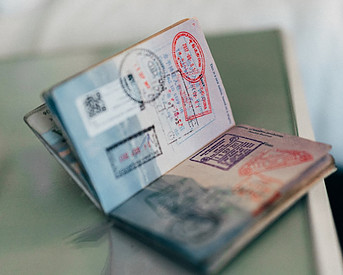
Portable Wi-Fi or Sim Card
I recommend the Wi-Fi buddy service. You can order a portable Wi-Fi or sim card in advance, and you can choose where you want to pick it up. Airports, hotels, Airbnb is no problem for this service. Return is also easy because there is a return envelope. Just drop it off at the hotel front desk, and they will mail it out for you.
Read my full review of the Japan Wi-Fi buddy.
Mass Transit
Japan has one of the best mass transit systems in the world. Trains, subways, and busses are always on time, but you will receive an apology in the event they are late. I’m not talking about 30 minutes late but one minute late. I’ve seen the staff bow 15 times to say they are sorry. That’s fantastic customer service.
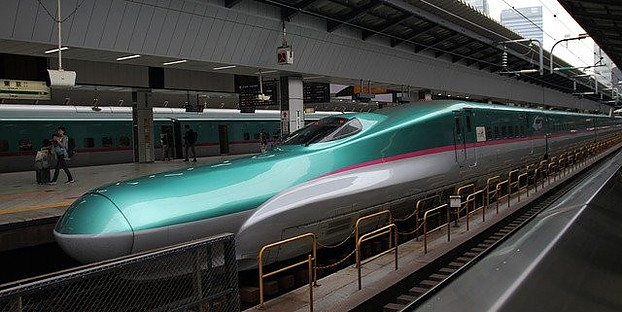
Here is the proper mass transit etiquette. Read up on Japanese culture, so you’re ready for Japan.
Find out about Japanese culture here.
No large Luggage – usually, there is no room for this.
No loose luggage or bags – keep control of your luggage and bags and all times.
No Luggage or bags in the seat – others need room to sit.
No noise – especially during rush hour when the train is packed.
No talking on the phone – Japanese consider this rude behavior.
No phone noises – Japanese don’t want to hear your ringtone, so put your phone on mute.
No litter – take everything you brought with you off.
No eating or drinking – Water is fine but nothing else on commuter trains.
Plan your trip to the hotel by connecting to the free airport Wi-Fi if you’re picking up your Wi-Fi buddy at the hotel or Airbnb.
The JR rail pass covers most areas of Japan and is valid for the period you purchase. 7, 14, or 21 consecutive days. When activated, the dates cannot be changed, and no extra days can be added.
I’ve used the JR rail pass before on vacation, and it saved me a lot of money. I planned my vacation around wherever the pass covered, and that is most of Japan.
JR line areas covered are:
- Limited Express trains
- Express trains
- Rapid trains
- Local trains
- Bullet trains except for Nozomi and Mizuho
- Tokyo monorail
- Yamanote line
- Tokyo Metro
- Narita Express (Narita airport train)
See my full review of the Japan Rail Pass (JR Pass) here.
Hotel or Airbnb
Hotels in Japan are super clean, and some even have robot staff. They are reliable and dependable. If you book a room, you’ll get a room. Hotels can also come with options like a private onsen (hot springs). However, they do cost more than Airbnb and don’t immerse you within Japanese culture as much as an Airbnb would.
An Airbnb, on the other hand, lets you stay in a Japanese home and experience the Japanese lifestyle. Airbnb is usually cheaper than a hotel, so if you want to save on lodging, this may be right. The more people in your group, the more cost-efficient an Airbnb is.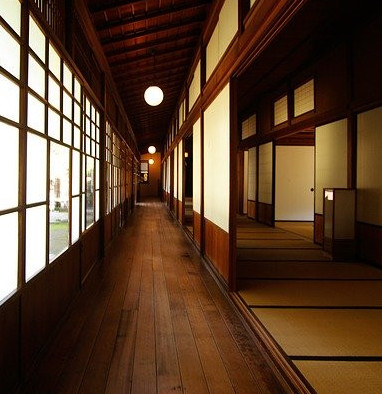
However, there are a few drawbacks to understand about Airbnb. There have been several reports of cancellations at the last minute. It can be very strenuous to search for a replacement lodging, especially during a holiday.
Hotels have staff that can speak different languages, especially English, who can call the police or an ambulance in case of an emergency. The hotel front desk can help with directions, make reservations, and assist with anything wrong with your room. Airbnb doesn’t always have someone who can do this, and in some cases, there is no assistance at all.
Places You Can Visit Only in Japan
While there are several special areas of Japan, I wanted to share a shortlist of places you can only truly experience in Japan.
- Onsen (hot springs)
- Anime and manga
- Sumo
- Animal cafe
- Animal Islands
- Maid cafe
Onsen
Most Japanese live a long and healthy life, and many believe that frequent trips to the onsen are among the reasons. I’m not completely sure about that, but I sure feel like a new person after taking a rest in one. Onsens are available throughout Japan, and you can even book a hotel with private onsen in your room.
Anime and manga
Japan is the birthplace of anime and manga. There is an entire city near Tokyo dedicated to it. Akihabara is home to everything anime and manga. You can buy all the anime, manga, figurines, posters, or life-size cardboard cutouts you could dream of. It’s in Japanese, but most people just want to own an original from the source.
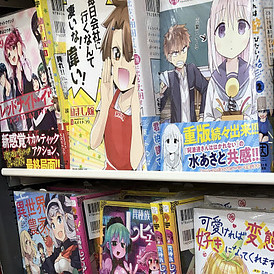
I visit Akihabara often to pick up a few items for friends and family back home. Manga books and figurines are the most requested items. I always go in the evening because the city lights up with an amazing display of different electronic signs at night.
Sumo
Sumo is a beloved sport that originated in Japan and is centuries old. The only way to see a professional sumo match is in Japan. Six Grand Sumo tournaments happen each year on odd months, so you can visit Japan any season to catch a tournament. Each tournament runs 15 days and begins/ends on Sunday.
I highly recommend attending a sumo tournament. Sumo is part of Japan’s history and is deep in century-old traditions. I don’t recommend sitting ringside because I’ve seen sumo tossed onto people near the ring.
Animal Cafe
There are several animal Cafes throughout Japan. All are unusual for most foreigners, but some are downright strange to people on vacation. Starting with the cat cafe, bunny cafe, or parakeet bird cafe that you might think is reasonable animals to have in this setting.
However, Japan has a snake cafe, owl cafe, hedgehog, and even a penguin cafe. You heard correct…a penguin cafe, and you can feed them four times a day. I love penguins, don’t you?
Animal Islands
Cats are everywhere in Japan and considered good luck, so an island full of cats must be the best luck of all. How about 13 islands full of them. The most popular are the islands of Tashiro-Jima and Aoshima. I wonder if catnip is in short supply in Japan.
Do you like bunnies? Okunoshima is full of them, and they’re wild and free to roam the island. They enjoy visitors and are unafraid of groups. Go ahead and feed them some fruit and play all you want because these bunnies want your attention.
6 species of fox live at the Zao fox village. This tourist attraction is the perfect place to get close to a fox and load your camera with as many fox pictures as it will hold.
Remember, don’t bring food to the village. After all, a fox is a wild animal.
Maid Cafe
A Maid cafe is an entertainment restaurant where you are greeted by a young Japanese person dressed as a maid. These maids serve their master (you) by taking your order, singing, dancing, and depending on the type of cafe, other entertainment.
A maid cafe is pure fun and enjoyable. However, stay aware of the cost because it can become expensive.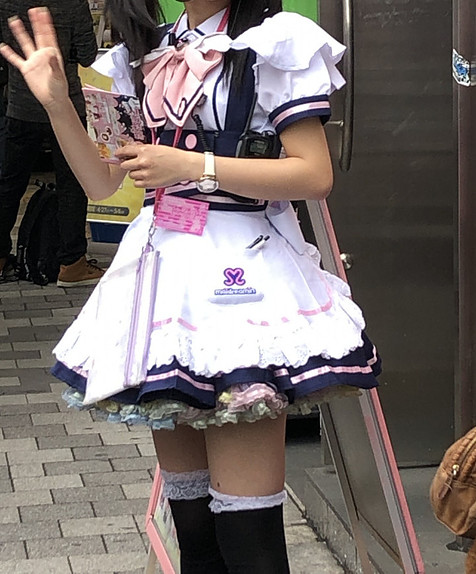
Take your time
You’re possibly thousands of miles away from home on vacation in the land of the rising sun. You want to see and do everything, and I don’t blame you. This may be the only vacation you ever take to Japan in your lifetime but consider this.
If you are on the go throughout your vacation, you’ll miss more than you know. My first trip to Japan was hectic and stressful. When I returned home, I felt like it was just like any other vacation. I didn’t stop and enjoy myself. I was always on the go and didn’t think about where I was or about Japan’s rich history.
My second trip to Japan gave me time to smell the roses and take in all the small stuff that makes Japan a rich tourist destination. I took in some sights and planned a local festival and several local walks just to view what Japan was all about. I visited the local grocery store and several parks. I fell In love with Japan and moved here.
Would I have moved here if I took another hectic and stressful vacation? I doubt it, and that’s the beauty of slowing down and taking in Japan’s culture and beauty. It grows on you and changes your life for the better in some cases (like mine).
Enjoy Your Vacation in Japan
Now that you have a complete plan for a Japan vacation remember to review it before your travel date to be fresh in your mind. A good plan will give you peace of mind and the ability to focus on the best part of Japan. The incredible places and people!
Please leave a comment below, and we’ll chat about Travel and Japan.
